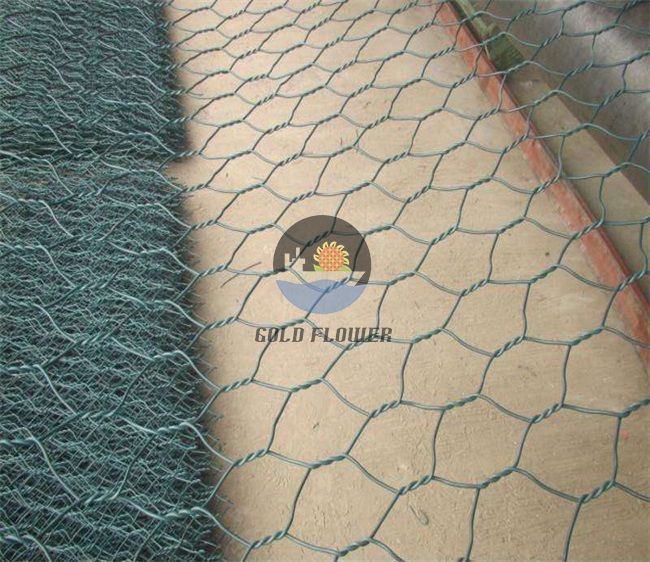gru . 04, 2024 09:48 Back to list
CE Certification for Metal Mesh Fabric Compliance and Quality Assurance
Understanding CE Certification for Fabric Metal Mesh
In today's increasingly globalized marketplace, ensuring product quality and safety is paramount. One of the key certifications that help establish these standards is the CE marking. This certification is particularly relevant for various products, including fabric metal mesh, used in numerous applications across diverse industries. This article explores the significance of CE certification for fabric metal mesh, detailing its benefits, requirements, and the certification process.
What is CE Certification?
CE marking, which stands for Conformité Européenne, is a certification mark that indicates a product's compliance with European Union (EU) health, safety, and environmental protection standards. For manufacturers intending to sell their products within the EU, obtaining a CE marking is mandatory. This mark assures consumers and businesses that the product has been thoroughly evaluated and meets the necessary criteria.
Importance of CE Certification for Fabric Metal Mesh
Fabric metal mesh is utilized in various applications, from architectural designs to industrial filters and protective clothing. Its importance in these sectors necessitates strict adherence to safety and performance standards. Here are several reasons CE certification is crucial for fabric metal mesh
1. Consumer Safety Ensuring that fabric metal mesh products comply with safety standards protects the end-user from potential hazards associated with defective products.
2. Market Access CE certification is often a prerequisite for entering the European market. Without the CE marking, manufacturers may face restrictions or outright bans on their products within EU member states.
3. Quality Assurance The certification process includes rigorous testing and evaluation, ensuring that the fabric metal mesh meets the performance specifications claimed by the manufacturer.
4. Legal Compliance Compliance with CE certification protects manufacturers from legal liabilities and penalties arising from non-conformance to regulations.
5. Competitive Advantage Products with CE marking are often viewed as more trustworthy, giving certified manufacturers an edge over competitors who do not pursue certification.
Requirements for CE Certification
To achieve CE certification, fabric metal mesh products must meet the relevant EU directives and standards
. The most pertinent directives for fabric metal mesh include the General Product Safety Directive (GPSD) and specific regulations related to personal protective equipment (PPE).Key requirements often include
ce certification fabric metal mesh

- Product Design and Construction The mesh must be designed to meet specific operational requirements while maintaining safety and functionality.
- Performance Testing Rigorous tests must be conducted to assess the mechanical properties of the mesh, such as tensile strength, resistance to corrosion, and fire safety.
- Documentation A comprehensive technical file must be prepared, documenting the design process, materials used, manufacturing methods, and test results.
- Risk Assessment Manufacturers must conduct a risk assessment to identify potential hazards associated with the use of the fabric metal mesh, followed by implementing measures to mitigate these risks.
The Certification Process
The journey to obtaining CE certification typically involves several structured steps
1. Identify Applicable Directives Manufacturers need to determine which EU directives apply to their product.
2. Assessment of Conformity Depending on the classification of the product, manufacturers choose the appropriate conformity assessment procedure. This could involve self-assessment or third-party testing by a notified body.
3. Testing and Evaluation Conduct the necessary testing to ensure compliance with EU standards.
4. Prepare Technical Documentation Assemble the technical documentation, demonstrating compliance with the applicable directives.
5. Affixing the CE Mark Once compliance is established, manufacturers can affix the CE marking to their products and begin marketing them in the EU.
6. Post-Market Surveillance Manufacturers are also responsible for monitoring the product's performance in the market and addressing any safety concerns that may arise post-sale.
Conclusion
CE certification is an essential aspect of manufacturing fabric metal mesh, playing a crucial role in ensuring consumer safety, maintaining product quality, and facilitating access to the European market. For manufacturers, the certification process may seem daunting, but the benefits far outweigh the challenges. By adhering to the stringent standards set by the EU, manufacturers not only protect their customers but also enhance their marketability and reputation in an increasingly competitive global landscape. In today’s world, investing in CE certification is not just a regulatory requirement; it is a commitment to quality and safety that resonates with consumers and partners alike.
share
-
CE Certified 250 Micron Stainless Steel Mesh | Precision & Durability
NewsAug.27,2025
-
CE Certified 250 Micron Stainless Steel Mesh for Precision & Durability
NewsAug.26,2025
-
CE Certified 250 Micron Stainless Steel Mesh for Precision & Durability
NewsAug.25,2025
-
Premium CE Certified Metal Fine Mesh for Precision & Safety
NewsAug.24,2025
-
Stainless Steel Wedge Wire Mesh: Durable, Precision Filtration
NewsAug.23,2025
-
CE Certified 250 Micron Stainless Steel Mesh for Precision Filtration
NewsAug.22,2025

